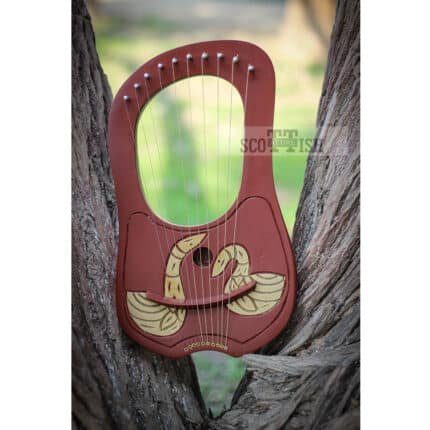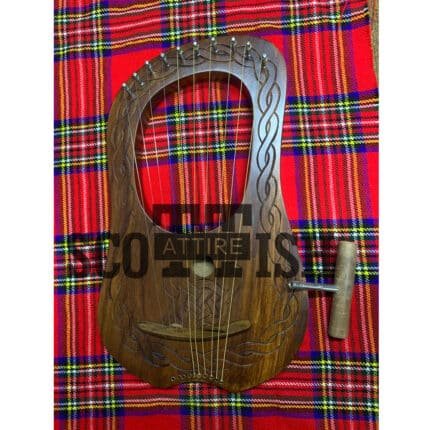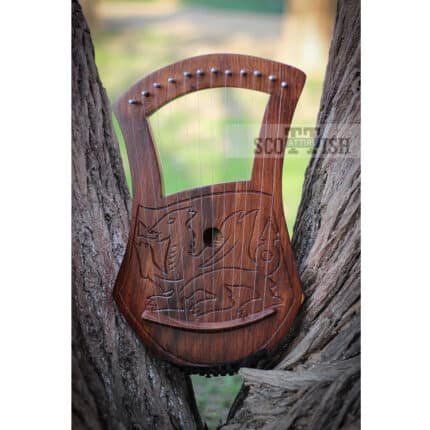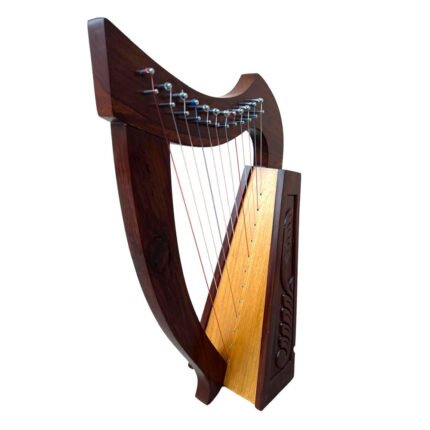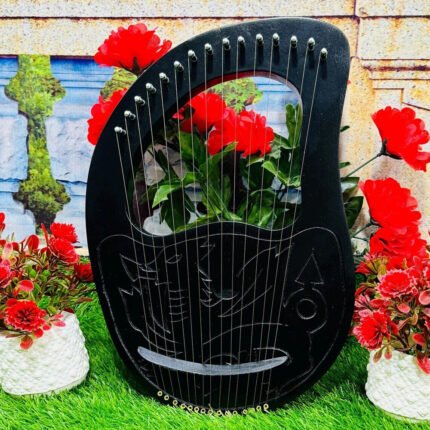Are lyres and harps the same
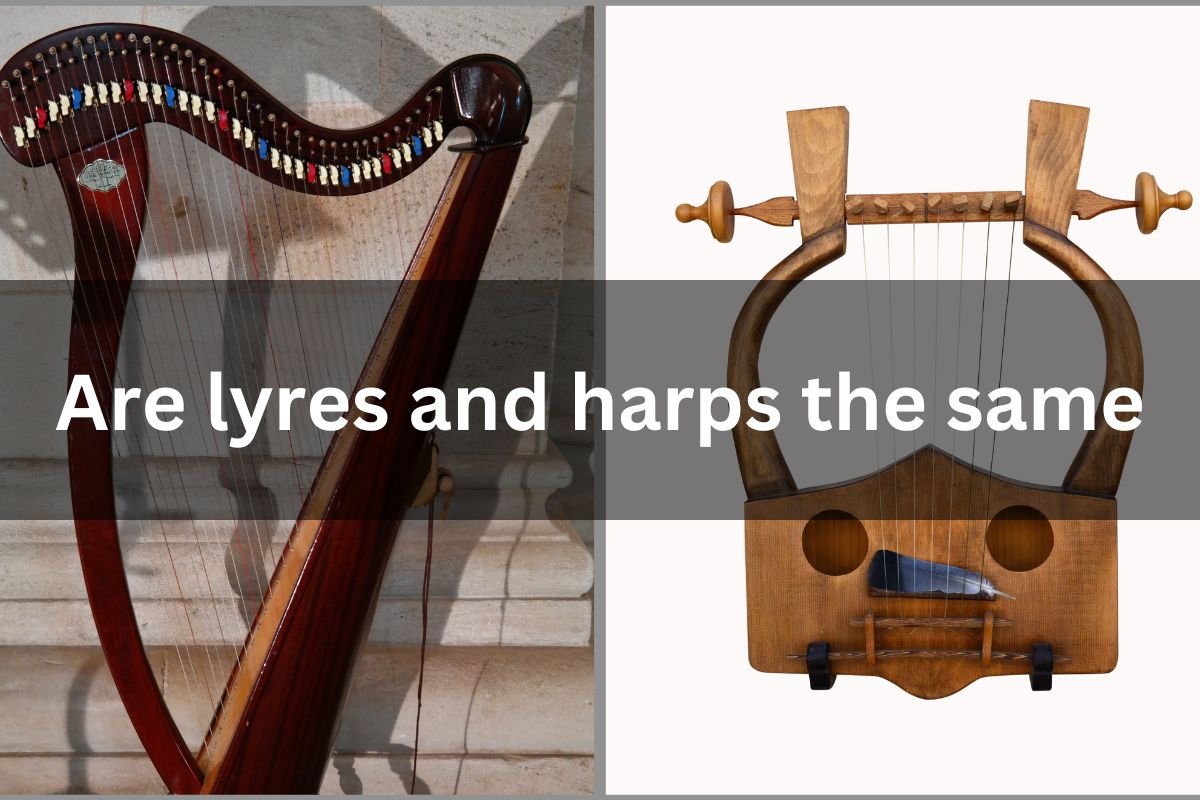
Are lyres and harps the same
In the symphony of human history, the echoes of ancient musical instruments reverberate through millennia, offering glimpses into the cultures that birthed them. From the haunting melodies of distant civilizations to the refined notes of royal courts, these instruments serve as melodic time capsules. In this exploration, we direct our focus to two illustrious string instruments that have transcended eras: the lyre and the harp.
Lyres and Harps: A Fascinating Tapestry of Strings
As we delve into the world of string instruments, the lyre and harp emerge as captivating protagonists, each weaving its own narrative through the annals of time. Their stories unfold in the delicate balance of tensioned strings and resonant soundboards, offering insights into the evolution of musical expression and the diverse cultures that nurtured these remarkable creations. Beyond their shared classification as string instruments, lyres and harps embody distinct characters, reflecting the ingenuity of ancient artisans and the unique societal contexts that shaped their forms and functions. Let us embark on a scholarly journey to unravel the intricacies of these captivating instruments, appreciating their significance in the grand tapestry of musical history.
Historical Origins
Lyres:
The origins of the lyre can be traced back to the cradle of civilization, Ancient Mesopotamia. This enchanting string instrument holds a significant place in history, with its roots deeply embedded in the cultural fabric of this early civilization. Mesopotamian lyres, adorned with intricate carvings and possessing a distinctive shape, served both ceremonial and entertainment purposes.
As time unfolded, the lyre transcended geographical boundaries, finding itself at the heart of various cultures, including the Greek and Roman civilizations. Each culture added its own nuances, refining the instrument and shaping its identity. In Greece, the lyre became synonymous with the poetic musings of bards, while in Rome, it echoed through grand arenas during gladiatorial events. The lyre’s evolution showcases its adaptability, resonating with the diverse tastes and preferences of each civilization it encountered.

Harps:
In the enchanting landscapes of Ancient Egypt, the harp found its humble beginnings. Dating back to around 3000 BCE, the ancient Egyptians crafted harps with an artistic finesse, depicting them in intricate drawings on the walls of tombs. These early harps were characterized by a simple shape and limited strings, yet they laid the groundwork for the instrument’s future evolution.
The harp’s journey did not end in the embrace of the Egyptian sands. Instead, it embarked on a journey across civilizations, influencing and being influenced by each. From the Assyrians to the Persians, and later the Greeks and Romans, the harp traversed cultural landscapes, adapting its form and function. This cross-cultural fertilization nurtured the harp into a symbol of elegance and sophistication, ultimately cementing its place in the annals of musical history.
The historical origins of both lyres and harps paint a rich tapestry of cultural interplay and musical evolution, where these instruments transcended their birthplaces to become timeless expressions of human creativity and emotion.
Design and Structure: A Symphony of Elegance and Simplicity
Lyres:
Lyres, with their ancient origins dating back to Mesopotamia, boast a design characterized by elegant simplicity. Crafted for portability and ease of use, lyres traditionally feature a resonating body, often triangular or rectangular, with a bridge supporting strings over a soundboard. This minimalistic design not only enhances their portability but also contributes to a distinctive, melodic resonance. The strings, typically made of materials such as gut or metal, are meticulously tuned to produce harmonious notes. The interaction between the strings and the resonating body creates a unique timbre that has resonated through centuries of musical history.
Harps:
In contrast, harps present a captivating juxtaposition with their elaborate structure and vertical frame. Originating in ancient Egypt, harps have evolved into diverse forms, each with its own unique charm. The vertical frame, standing as a testament to the instrument’s regal presence, provides the foundation for an intricate system of strings. From lever harps, where manual levers modify pitch, to pedal harps, where foot pedals achieve the same effect, the diversity of harp types allows for a broad range of musical expression. The grandeur of their design not only contributes to their aesthetic appeal but also underscores their versatility in the realm of musical expression.
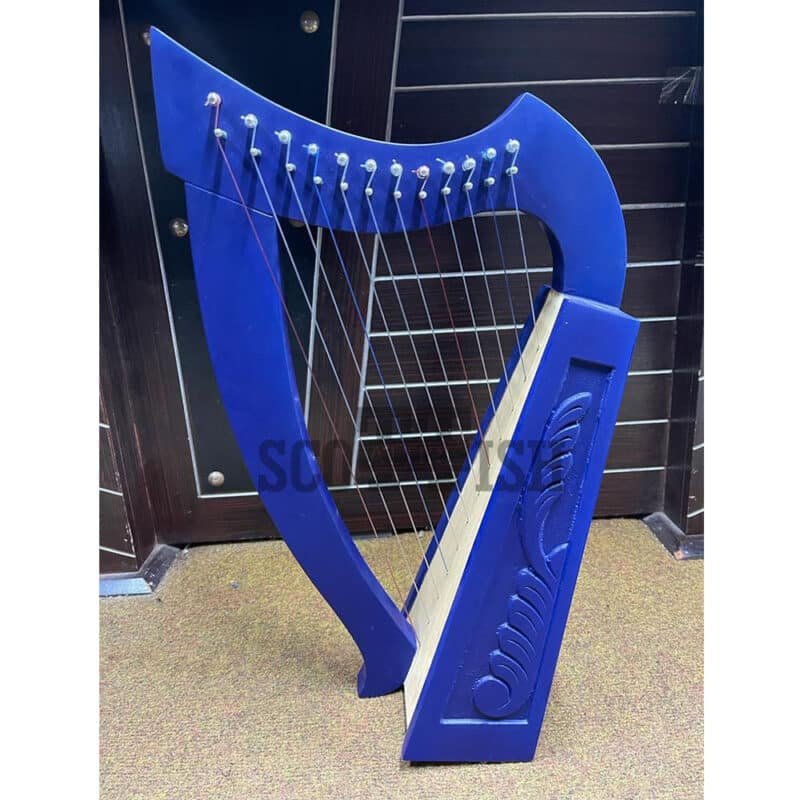
Playing Techniques
Lyres
Lyres, with their ancient origins dating back to Mesopotamia, boast a distinct playing technique primarily involving plucking the strings with fingers. This tactile approach to producing sound contributes to the lyre’s unique tonality, characterized by its gentle and melodic resonance. The historical significance of lyres in storytelling and ceremonial contexts cannot be overstated. These instruments were not merely sources of music but were revered for their ability to convey narratives and evoke emotions. In ancient cultures, lyres often accompanied epic tales and sacred ceremonies, enhancing the overall experience and leaving a lasting cultural imprint.
Harps
Harps, known for their elaborate design, employ a plucking technique, often augmented by the use of pedals or levers. The incorporation of these mechanisms allows harpists to manipulate the pitch of the strings, broadening the instrument’s tonal range. The harp’s versatility in playing styles is a testament to its adaptability across various musical genres. From classical compositions to contemporary pieces, harps offer a dynamic spectrum of expression. The inclusion of pedals or levers enables the harpist to seamlessly shift between different keys, enhancing the instrument’s harmonic possibilities.
10 Strings Duck Design Lyre Harp
Original price was: $149.00.$129.00Current price is: $129.00.10 Strings Lyre Harp For Sale
Original price was: $100.00.$90.00Current price is: $90.00.10 Strings Red Flower Lyre Harp
Original price was: $139.00.$129.00Current price is: $129.00.12 String Blue Lyre Harp
Original price was: $399.00.$299.00Current price is: $299.00.12 String Pink Lyre Harp
Original price was: $399.00.$299.00Current price is: $299.00.12 String Yellow Lyre Harp
Original price was: $399.00.$299.00Current price is: $299.00.12 Strings Dragon Lyre Harp
Original price was: $149.00.$129.00Current price is: $129.00.12 Strings Wooden Polish Lyre Harp
Original price was: $399.00.$299.00Current price is: $299.00.15 Strings Black Rosewood Dragon Lyre
Original price was: $100.00.$90.00Current price is: $90.00.
Cultural Significance
Lyres
- Symbolism in Mythology and Ancient Rituals: Lyres have held a profound symbolic significance in various mythologies and ancient rituals. In Greek mythology, the lyre is often associated with the god Apollo, symbolizing the harmony between celestial and earthly realms. The instrument’s melodious tones were believed to have the power to heal and soothe. Additionally, in Mesopotamian cultures, the lyre played a role in religious ceremonies, connecting the divine with the mortal through its enchanting sounds. The symbolic importance of the lyre extends beyond its physical form, becoming a conduit for spiritual and mythic narratives.
- Role in Historical Events and Stories: Throughout history, lyres have played a pivotal role in shaping narratives and historical events. The Lyre of Ur, an ancient Sumerian artifact dating back to 2500 BCE, is a testament to the instrument’s prominence in the cradle of civilization. Lyres were not only tools for musical expression but also served as instruments of diplomacy and cultural exchange. Their presence in historical accounts and stories highlights their integral role in the fabric of societies, acting as both sources of entertainment and tools for communication.
Harps
- Royal and Aristocratic Associations: Harps, with their elegant and majestic designs, have long been associated with royalty and the aristocracy. The resonant tones of the harp were considered a symbol of refinement and sophistication, often gracing the courts of kings and queens. In medieval and Renaissance Europe, harpists were sought after as esteemed court musicians, adding a regal touch to grand events. The harp’s association with nobility transcended its musical role, making it a status symbol that conveyed prestige and cultural refinement.
- Representation in Folklore and Literature: The harp’s enchanting presence extends into folklore and literature, where it often serves as a magical or mystical element. In Celtic mythology, the harp is portrayed as a source of inspiration and transformation, with tales of magical harps that could control the elements. In literature, harps are frequently used as metaphors for beauty and elegance, weaving through the fabric of stories to evoke emotions and set the tone for epic adventures. The harp’s representation in folklore and literature reinforces its timeless allure and enduring cultural significance.
Musical Repertoire
Lyres
- Genres and Styles Historically Associated: The lyre, with its ancient origins dating back to Mesopotamia, played a crucial role in shaping the musical landscape of various civilizations. In antiquity, lyres were emblematic of sacred and ceremonial music. The resonant tones of the lyre were often intertwined with religious rites, mythological storytelling, and even martial events in cultures such as Ancient Greece and Rome. Its ethereal sounds were the backdrop to poetic recitations, adding an emotive layer to epic tales and lyrical compositions.
- Modern Adaptations and Uses: In the contemporary era, lyres have experienced a revival, finding a place in both traditional and experimental musical genres. Musicians and enthusiasts alike have embraced the unique timbre of the lyre, incorporating it into folk, world music, and even ambient genres. The portability and distinctive tonal quality of the lyre make it a sought-after instrument for those exploring historical musical roots. Moreover, modern artisans craft lyres with a blend of tradition and innovation, allowing musicians to experiment with this ancient instrument in a myriad of ways.
Harps
- Classical Music Prominence: The harp, revered for its elegance and celestial resonance, has long held a distinguished place in classical music. From the angelic arpeggios in orchestral compositions to the solo performances in chamber music, the harp’s versatility has made it an integral part of the classical repertoire. Renowned composers like Debussy and Handel have immortalized the harp’s enchanting sound, elevating it to a symbol of grace and sophistication within the classical realm.
- Contemporary and Diverse Musical Applications: Beyond its classical roots, the harp has seamlessly integrated into contemporary music across various genres. In the realm of popular music, artists across genres employ the harp to add a touch of ethereal beauty to their compositions. Its inclusion in folk, jazz, and even rock music showcases the instrument’s adaptability. Additionally, harpists contribute to film scores, providing a cinematic quality that enhances emotional depth and storytelling. In the hands of innovative musicians, the harp continues to redefine its role, transcending traditional boundaries and finding resonance in diverse musical landscapes.


